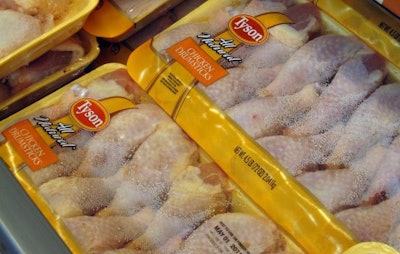
Tyson Foods saw net income and operating income decline during the first quarter of fiscal year 2021, with the company’s chicken segment seeing the biggest drop in operating income.
The company on February 11 released the financial reports for the quarter, which ended on January 2.
Tyson Foods reported a net income of $472 million for the quarter, down from the $509 in net income achieved during the first quarter of 2020. The company’s net sales for the slid from $10.82 billion one year ago to $10.46 billion during the most recent quarter, while the operating income dropped from $758 million to $705 million.
Broken down by segments, Tyson Foods’ chicken segment reported an operating loss of $216 million, compared to an operating income of $57 million one year ago. The company’s operating income for its pork segment also declined during the first quarter on a year-over-year basis, sliding from $191 million to $116 million. Tyson’s beef, prepared foods and international/other segments all improved when compared to the first quarter of last year.
Chicken segment performance
Tyson saw its chicken sales volume decrease due to lower production throughput including impacts associated with the COVID-19 pandemic. The average sale price increased during the quarter due to a favorable sales mix and overall retail market conditions.
The segment’s operating income turned into an operating loss for the quarter, primarily due to a $320 million loss “from the recognition of a legal contingency accrual,” as well as production inefficiencies and direct incremental expenses related to the pandemic.
Impact of COVID-19
Companywide, Tyson Foods incurred direct incremental expenses associated with the pandemic’s impact at about $120 million for the first quarter. Those direct incremental expenses primarily included team member costs associated with worker health and availability, including direct costs for personal protective equipment, production facility sanitation, testings, donations, product downgrades, rendered product and certain professional feeds.
View our continuing coverage of the coronavirus/COVID-19 pandemic.


















